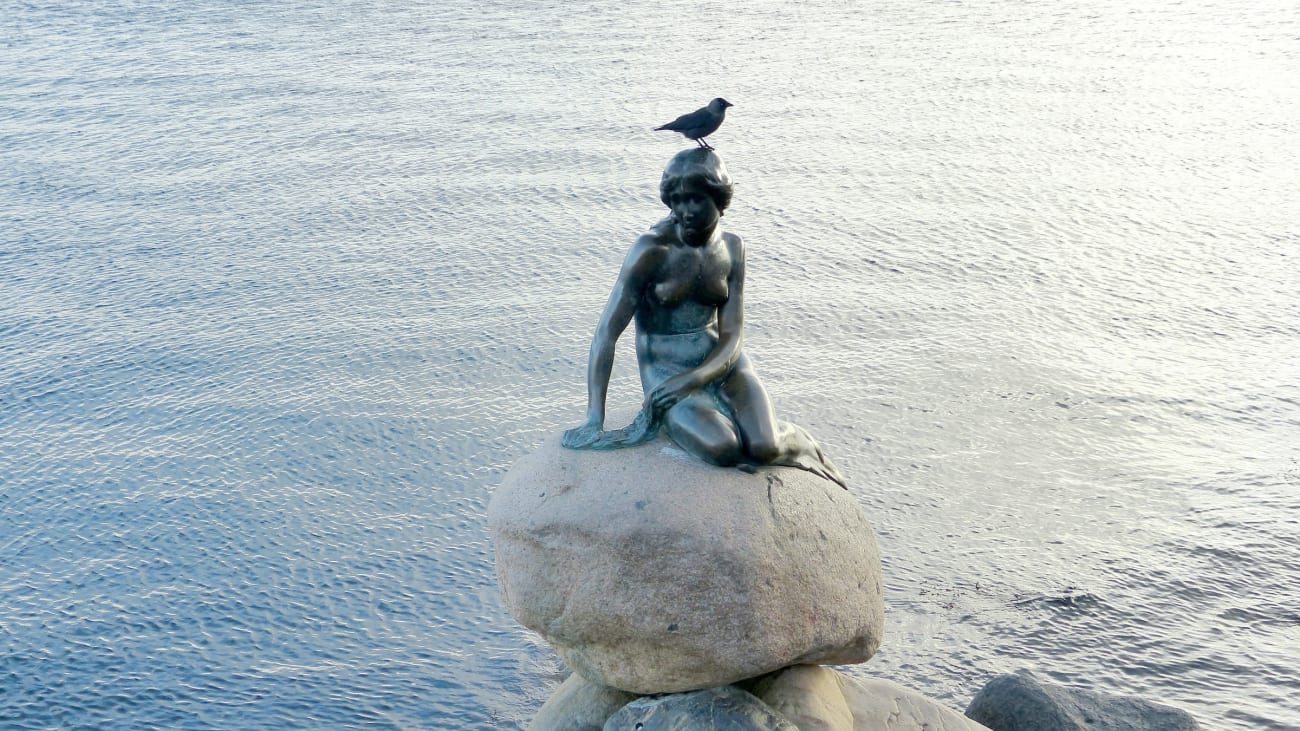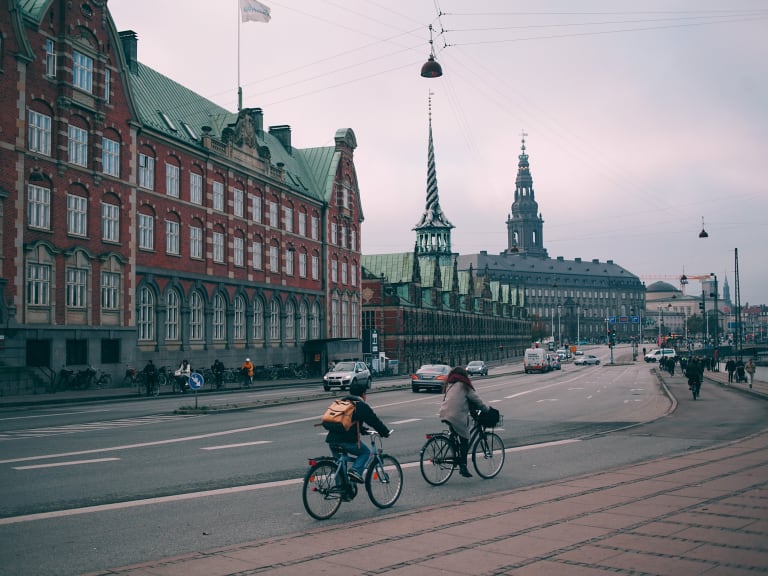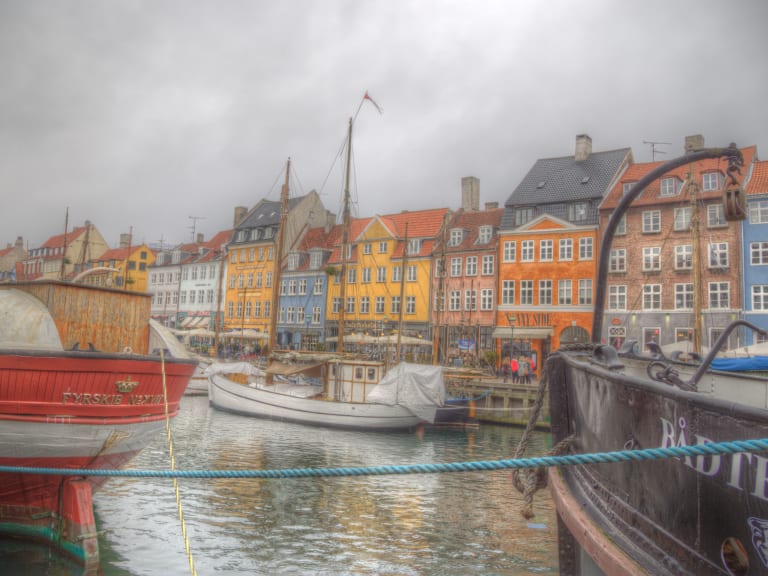Best time to go to Copenhagen
To travel to Copenhagen, you first need to know the most appropriate date to get around the city without any inconvenience - read on!

Copenhagen Harbour Statue | ©Rafa G. Bonilla
Copenhagen is charming all year round, but I recommend visiting when the weather is pleasant, i.e. in spring and summer, as temperatures are very cold in autumn and winter.
Choosing the best time to go to Copenhagen is key to be prepared and avoid last-minute surprises. For example, many activities are closed on Mondays, so I don't recommend including this day of the week in your itinerary. You can check the official websites of monuments and attractions or even schedule a guided tour, which will save you a lot of logistical hassle during your trip.
When is the best time to travel to Copenhagen?

To enjoy all its attractions, I recommend scheduling your trip between March and May, or between June and August, months corresponding to spring and summer activities. During spring, temperatures are pleasant and there are plenty of outdoor activities, and you won't need to dress warmly to feel comfortable.
Summer in Copenhagen is cooler, so it's ideal for booking a bike tour and enjoying the longer days. Unlike other Scandinavian countries, autumn is not as cold, but rain is in the forecast and can spoil many of your plans.
Winter is for the brave, as the days are short and it can snow.
Seasons in Copenhagen
- The high season in Copenhagen corresponds to the months of June, July and August, the influx of tourists is very high and although there are a variety of events, festivals and activities, prices in accommodation, airfare and tickets, are higher.
- The mid-season coincides with the months of April and November, when prices are more stable and the monuments can be seen without so many people in the way.
- Low season is January, February and March, when you can enjoy the streets without so many people, airfare is cheap, as is accommodation, but many attractions close earlier or are not open to the public.
Visit Copenhagen in spring: carnivals, outdoor activities and lots of beer

Spring brings the first rays of sunshine and the streets start to warm up, so it's nice to take a walking tour and, of course, book a tour of Copenhagen.
You can also attend the National Beer Festival, which involves touring the city's bars and pubs and sampling the local brews.
The month of May in particular offers a great variety of activities in Copenhagen. In fact, it is considered the best month of spring, as it is close to summer and the city is full of festivals and fun events. Some of the most entertaining events not to be missed during this season are:
- The Copenhagen Carnival which takes place Brazilian style during the month of May.
- Sit in a café in the historic centre and surround yourself with a blanket, while admiring the surrounding streets.
- Take part in the Nykredit Copenhagen Marathon, a signature May marathon that takes in iconic sites around the city.
- Take advantage of the first weeks of April, when Amalienborg Palace opens its doors to visit the four royal enclosures that preserve the history of the Danish monarchy.
Advantages of visiting Copenhagen in spring
If you want to make plans during spring in Copenhagen, here are the advantages of visiting the city during this season:
- Climate: Temperatures are mild, ranging from 10°C to 15°C, so you won't need to bring warm clothes and your suitcase will be light. The absence of wind and rain makes this season the perfect opportunity to explore the city.
- Longer days: You'll be able to enjoy the company of the sun for longer, ideal for booking plans at the piers or on the outskirts of the city.
- Clear views: If you want to climb the Rundetaarn Tower or other high points in the city, spring is an appropriate time.
- Blossom: Cherry trees decorate the city, making walks more enjoyable and special.
- Outdoor activities: You can visit parks, go cycling, book a canal tour or visit the city's markets.
Disadvantages of visiting Copenhagen in springtime
- Very cold beaches: If you're looking to enjoy the beaches or take a dip, I don't recommend spring.
- Unforeseen events: If you travel during the first weeks of April, don't be overconfident. Spring is just beginning and you may encounter low temperatures and precipitation.
Visiting Copenhagen in summer: sun, festivals and beaches

Summer in Copenhagen is an ideal time for a holiday, as the temperatures are pleasant, the UV rays are not dangerous and the heat is moderate. July is the busiest month, as the season is at its most exciting. It is also an ideal time to book a walking tour of Copenhagen or a Segway tour of Copenhagen.
In this season you can wear a swimming costume, cool shirts and summer clothes, but don't rule out a jacket for evening walks. In summer I recommend a gondola ride outside the city at Hamlet Castle, a tour of the canals or renting a kayak. Some great summer activities include:
- Getting up close to the bonfire lighting that celebrates the summer solstice, held during June.
- Attend the summer festivals, such as the Copenhagen Jazz Festival which brings live music to the city, the Roskilde Festival where over 180 national and international bands perform, or the electronic events such as Distortion Ø and Strøm Festival.
- Take a stroll through the Old Library, to see the art exhibitions available throughout the season.
- Learn more about the Danish monarchy, Christian VIII Palace is open from July to August, ideal for touring the royal flats and the Amalienborg Museum.
- Enter Rosenborg Castle to see the royal halls, gardens and museum that traces the history of the monarchy.
- Visit the beaches where hundreds of people sunbathe by the sea - you can be one of them!
Advantages of visiting Copenhagen in summer
Doing things during the summer in Copenhagen is a great option, as it is a season with many opportunities. Among them:
- Temperatures: Summer offers you the best of Copenhagen, thanks to its pleasant temperatures you can enjoy outdoor activities, avoid the rain and take a swim at the beach. Generally, it stays between 12° to 26° C.
- Very long days: You can make the most of your visit, as it gets dark later from June to August. Evenings are cool, so you can also go on night tours.
- More fun: Many tourist attractions are open later in the summer or open exclusively during the summer, and even offer discounted ticket prices. One of the best plans is to hop on a bus tour with free stops.
Disadvantages of visiting Copenhagen in summer
- Humidity: Some days can be humid and sticky, which is unusual, but I recommend you be prepared for anything. Humidity sets in for a few days in late July.
- High accommodation: While you can get discounts for attractions, accommodation is likely to be exorbitantly priced, especially in the more central areas.
- Tourist crowds: Copenhagen is crowded during the summer, queues are longer and attractions can be overcrowded. One solution is to buy the Copenhagen Card, which gives you free admission to monuments, discounts at restaurants and free transport.
Visiting Copenhagen in autumn: open-air concerts, Halloween and Kulturnatte Night

As autumn approaches, you should once again include warm clothing for your trips to Copenhagen. You can still go cycling without freezing. The leaves on the trees are leaving the city and the colours of the Botanical Gardens are a sight to behold.
In mid-October, I recommend you look for plans in covered areas or buy an umbrella to protect you from freezing rain. In the last weeks of September you can enjoy open-air concerts in Tivoli Gardens on Fridays, and film lovers should not miss the Copenhagen Film Festival. Fun things to do in autumn include:
- Celebrate Halloween in Tivoli Gardens, you can wear your spookiest costume and enjoy the zombie dance, enter the haunted hotel or have your photo taken with the pumpkin decorations. Be sure to book your ticket for Tivoli Gardens.
- Visit Copenhagen's best museums including Frilandsmuseet, one of the world's oldest open-air museums, open exclusively during this season. You can tour houses built between 1650 and 1940, or see more than 50 farmhouses.
- The unmissable culture night, better known as kulturnatten, is open from 5pm to 5am. Held during October, it offers history, culture and art, and the best thing is that transport in Copenhagen is completely free on this day.
Advantages of visiting Copenhagen in autumn
Autumn offers many things to do such as booking a tour of Copenhagen, plus it is a time with a variety of attractive advantages, including:
- Vibrant colours: Copenhagen's colourful streets become even more charming with the arrival of autumn brown on the city's trees.
- Halloween: The best plan for the scariest time of the year can be found in the historic centre of Copenhagen, where, in addition to Tivoli, there are many parties and entertaining activities.
- Bearable temperatures: The good weather starts to leave Copenhagen in the last months of the year, so make the most of September before the rains come. Temperatures start to drop from 17°C to 4°C.
- Avoid the crowds: Tourist crowds in autumn are moderate, so you can get a privileged view of the palaces and monuments.
Disadvantages of visiting Copenhagen in autumn
- Short days: The sun sets early and the days are cloudy. I don't recommend climbing the towers, as the cloud cover won't allow you to enjoy them to the fullest.
- Rain: Rainfall is unavoidable and you should go out with protection. Visiting Copenhagen's canals is a tricky plan at this time of year.
Visit Copenhagen in winter: Christmas, markets and ice skating

During the winter, Christmas activities make the season more cosy. I recommend you go in search of a glögg, considered the best mulled wine in the region, and try to make the most of the light, as it tends to get dark very early. It's also a great time to book a Copenhagen bus or visit some of the major museums such as the National Museum of Denmark.
Festivals and celebrations also take centre stage in winter, some ideal activities include:
- The Nutcracker re-enactment at Tivoli Amusement Park, where a variety of markets are also on display from November to December.
- See the snow- the chances of seeing a real snowfall are highest in February.
- Take part in the St Lucia's Day kayak procession, where people light candles and illuminate the Nyhavn Canal, one of the best things to do in December.
- Visit the Christmas Markets, you can find many Christmas themed markets, the most popular are the one in the Christiania district where you can sample the local beer, or the one in the Nyhavn canal that offers shows in front of the sea.
- Sample Danish Christmas food in the Meatpacking District.
- Ice skating - there are plenty of indoor rinks, but you can also look for natural options, such as Lake Peblinge Sø, which often freezes over at this time of year.
- Welcome in the New Year, as all the attractions are open on their last working day until spring.
Advantages of visiting Copenhagen in winter
In winter there are many things to do in Copenhagen, which offer several advantages including:
- Nordic Christmas: Christmas events in Copenhagen are magical, and the Danes make sure it's a magical time of year.
- Last days: Many activities offer discounts and special events, as they will be closed for the season.
- Low season: In the winter there are few tourists, except for Christmas and New Year, when there are usually extra visitors.
Disadvantages of visiting Copenhagen in winter
- Very short days: At this time of year the sun rises at approximately 9am and sets at 3pm in the afternoon.
- Extreme temperatures: Copenhagen's cold in winter is not for everyone. However, they can drop from 5° to -1°, so thermal protective clothing is a must in your suitcase at this time of year.
- Little luggage space: The amount of thick jackets you'll need to cover yourself from the cold will take up a lot of space in your suitcase.
A comparison of the different seasons for visiting Copenhagen
- Winter
- December - February
- Very short days
- Extreme temperatures and snow
- Low tourist numbers
- Spring
- March - May
- Long days
- Mild temperatures
- Moderate tourism
- Summer
- June - August
- Very long days
- Pleasant temperatures
- Large number of tourists
- Autumn
- September - November
- Short days
- Low temperatures with rain
- Little tourism
